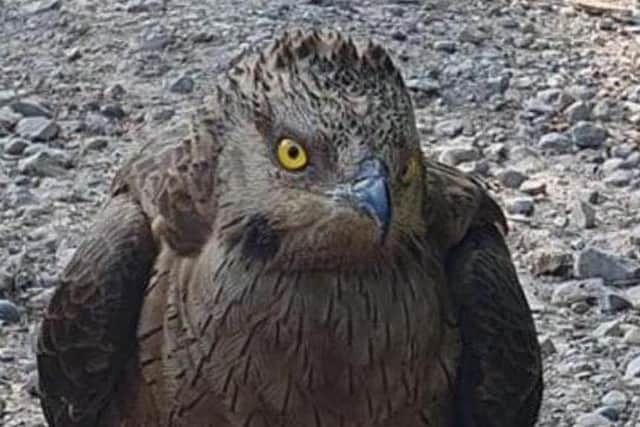‘One of the UK's rarest breeding birds’ found in Sussex
and live on Freeview channel 276
On June 5 Seahaven Wildlife Rescue (SWR) received a call to help a honey-buzzard in Alfriston, East Sussex, that was in need of medical attention.
The British Trust for Ornithology (BTO) said: “One of the UK's rarest breeding birds, honey-buzzard is a raptor with a predilection for the grubs of wasp and bees.
Advertisement
Hide AdAdvertisement
Hide Ad“While undoubtedly a rare breeding bird, the honey-buzzard's preference for secluded mature woodland and secretive behaviour – spending relatively little time in the air – means that it is probably under-recorded. Honey-buzzard is a summer visitor, whose wintering grounds lie to the south of the Sahara.”


SWR said ‘this is an extremely rare occurrence’.
A SWR spokesperson added: “These birds are not often seen, they are very secretive birds and are migratory visitors to the UK. This is very exciting data for wildlife centres and also organisations such as the BTO and the Rare Breeding Birds Panel.”
SWR founder Carrie Rae said: “There has not been a honey-buzzard in for care at a wildlife center for a substantial number of years so it was a very unusual call-out and a first for us.”
Unfortunately the bird was in very poor health and passed away whilst on route to the veterinary practice.
Advertisement
Hide AdAdvertisement
Hide AdThe British Wildlife Rehabilitation Council (BWRC) said: “Being an unusual visitor to the area, a schedule one protected species and an amber listed bird, both Seahaven and the BTO suggested a post-mortem to see if we could learn what may have been the cause of death. With only 33-69 breeding pairs, it's important to learn from this summer visitor.
"After getting into contact with Surrey University to see if they could help, a private post-mortem – with part funding from the Animal and Plant Health Agency - was performed.
"It's not only important for us to rule out any human cause, but also for disease surveillance and epidemiology.”
It was deemed that the cause of death was head trauma.
The BWRC added: “We are still awaiting further histology results to rule out any underlying disease that could have also played a factor in this bird’s demise.”
